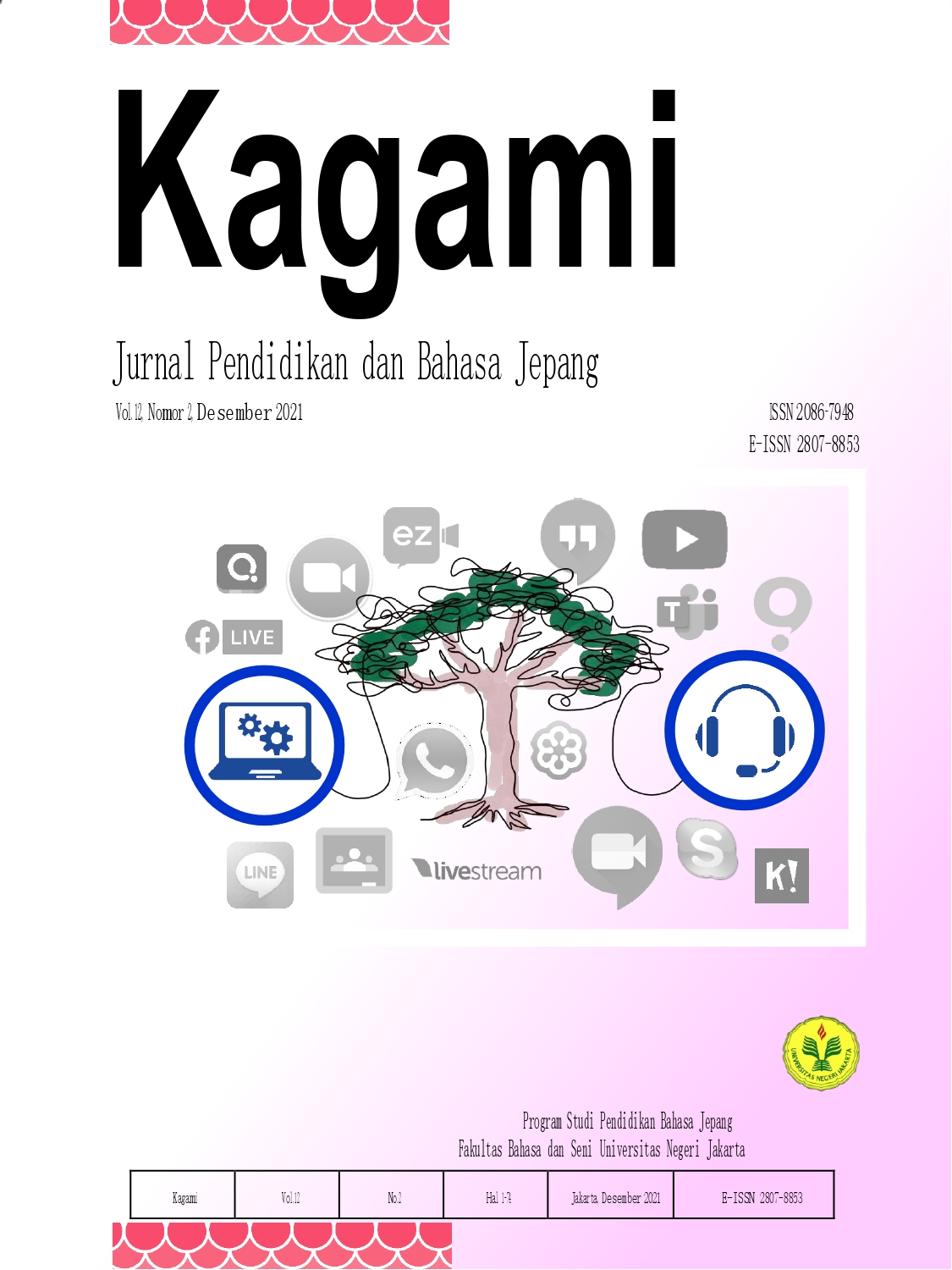ANALISIS SETSUBIJI SEI DAN PADANANNYA DALAM BAHASA INDONESIA
Keywords:
Suffix, Setsubiji, Equivalent, SeiAbstract
This study aims to determine the class classification of words, grammatical meaning, syntactic functions and Indonesian equivalent of the suffix sei. In analyzing word class classifications, using the referential equivalent method. The method of data analysis in grammatical analysis is the aggregate method, with advanced techniques of fade. Whereas in the equivalent analysis, using the method of compounding analysis. The results of this study are: Class words that can be attached to the -sei namely, denominal verbs/ doumeishi of type, action verbs/dousa, state verbs/ joutai and verbs of change/ henka, then denominal adjectives/keiyoudoushi which expressing characters and feelings. Then, nouns/ meishi type of person/hito, object/mono, situation /jitai, and time/ jikan. -Sei also changes word classes to abstract nouns. -Sei in Indonesian, can be added as a suffix -itas, -si / i, -nya, -if and confix ke- an, or can also change words such as adding meaning to power/character, and change meaning into risk, base, and scientific.The grammatical meaning produced by the -sei is, increasing levels, changing meanings (reform - innovation, anticipation - vision, elastic - flexible), adding the meaning of 'power' and 'character', changing the meaning nuance, adding to the impression of feeling, and adding to the subjective / objective impression.
References
Chaer, Abdul. (2002). Pengantar Semantik Bahasa Indonesia. Jakarta: Rineka Cipta.
Iori, Isao, dkk. (2001). Shokyuu o Oshieru Hito no Tame no Nihongo Bunpou Handobukku. Tokyo: 3A Corporation
Iori, Isao, dkk. (2002). Chuujoukyuu o Oshieru Hito no Tame no Nihongo Bunpou Handobukku. Tokyo: 3A Corporation.
Kindaichi, Haruhiko. (1989). Nihongo Daijiten. Tokyo: Kodansha.
Kridalaksana, Harimurti. (2001). Kamus Linguistik. Jakarta: Gramedia Pustaka Utama.
Muslich, Masnur. 2008. Tata Bentuk Bahasa Indonesia Kajian ke Arah Tatabahasa Deskriptif. Jakarta: PT Bumi Aksara.
Renariah. 2005. Afik Bahasa Jepang yang Menyatakan “Orang”. Jawa Barat: Jurnal Media Komunikasi.
Samsuri. 1988. Morfologi dan Pembentukan Kata. Jakarta: Depdikbud. Shinkokugokenkyoukai. 1996. Kokugodaijiten. Tokyo: Seibundouinsatsu Kinensha.
Shogakukan. 1983. Kokugodaijiten. Tokyo: Shogakukan: Ooga Tetsuo. Sunarni, Nani dan Jonjon Johana. 2016. Morfologi Bahasa Jepang. Bandung: Unpad Press.
Tjandra, Sheddy N. 2015. Morfologi Jepang. Jakarta: PT Widua Inovasi Nusantara.
Vance, Timothy J, terjemahan Rahayu Ratnaningsih. 1990. Prefiks dan Sufiks dalam Bahasa Jepang. Bekasi Timur: Kesaint Blanc.
Yasin, Sulchan. 1988. Tinjauan Deskriptif Seputar Morfologi. Surabaya: Usaha Nasional.





